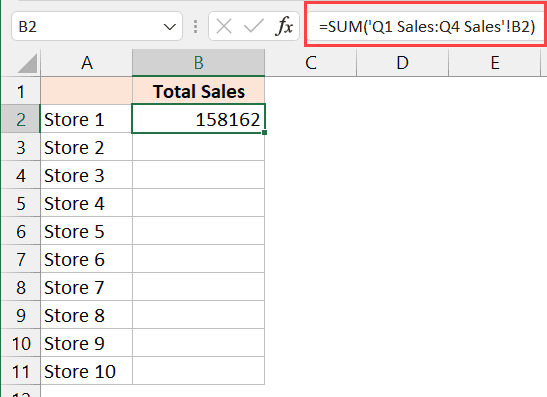Excel Macro Magic: Pulling Data Between Sheets Easily

Mastering Excel Macros for Efficient Data Transfer
Ever struggled with the manual task of transferring data between spreadsheets in Microsoft Excel? If you're nodding, it's time to embrace the power of Excel macros. Excel macros can automate repetitive tasks, saving time and increasing productivity. Here's how you can utilize macros to seamlessly pull data between sheets.
The Basics of Excel Macros

Before diving into the specifics of data transfer, understanding the fundamentals of Excel macros is essential:
- What is a macro? A macro is a sequence of instructions that automates repetitive tasks.
- How to access macros: You can access the macro functionality via the Developer tab. If it’s not visible, you might need to enable it from Excel Options.

Creating Your First Macro for Data Transfer

Here’s a step-by-step guide on how to create a macro that pulls data from one sheet to another:
- Open Excel and enable Developer Tools: Go to File > Options > Customize Ribbon, check the Developer box, and click OK.
- Create a new workbook or use an existing one: Ensure you have two or more sheets in your workbook for data transfer.
- Access the Visual Basic Editor (VBE): On the Developer tab, click ‘Visual Basic’, or press Alt + F11.
- Add a new module: In VBE, go to Insert > Module.
- Write your macro code: Here’s an example of code to transfer data from ‘Sheet1’ to ‘Sheet2’:
Sub TransferData() Dim wsSource As Worksheet, wsTarget As Worksheet Set wsSource = Sheets("Sheet1") Set wsTarget = Sheets("Sheet2") Dim lastRow As Long lastRow = wsSource.Cells(wsSource.Rows.Count, "A").End(xlUp).Row wsSource.Range("A1:C" & lastRow).Copy Destination:=wsTarget.Range("A1") End SubReplace 'Sheet1' and 'Sheet2' with your actual sheet names.
- Save and Close VBE: Return to Excel and press Alt + F8 to run the macro.
💡 Note: Always name your macros descriptively to make them easier to recall and use.
Advanced Techniques for Data Transfer

Now that you're familiar with the basics, let's explore some advanced techniques:
- Conditional Data Transfer: Use VBA to transfer data only when certain conditions are met.
- Dynamic Range Handling: Employ functions like 'currentRegion' to automatically adjust the range based on your data.
- Error Handling: Add error handling to your macros to manage situations where data might not exist or sheets are renamed.
Here's an example of a more complex macro:
```vba Sub AdvancedTransfer() Dim wsSource As Worksheet, wsTarget As Worksheet Set wsSource = ThisWorkbook.Sheets("Source") Set wsTarget = ThisWorkbook.Sheets("Target") On Error GoTo ErrorHandler Dim rngSource As Range Set rngSource = wsSource.Range("A1").CurrentRegion wsTarget.Range("A1").Resize(rngSource.Rows.Count, rngSource.Columns.Count).Value = rngSource.Value Exit Sub ErrorHandler: MsgBox "There was an error transferring the data: " & Err.Description End Sub ```This macro dynamically selects the source data, transfers it to the target sheet, and includes basic error handling.
Using Tables for Data Transfer

Excel’s structured references make working with tables a breeze:
| Source Table | Target Table |
|---|---|
| Table1 | Table2 |

Here’s how you can refer to tables in VBA:
Sub TransferFromTable()
Dim tblSource As ListObject, tblTarget As ListObject
Set tblSource = ThisWorkbook.Worksheets("Sheet1").ListObjects("Table1")
Set tblTarget = ThisWorkbook.Worksheets("Sheet2").ListObjects("Table2")
tblTarget.DataBodyRange.Value = tblSource.DataBodyRange.Value
End Sub
💡 Note: Tables automatically update when data is added or removed, making them ideal for dynamic data transfer.
Troubleshooting Common Issues

Even the best-crafted macros can encounter issues. Here are some common problems and their solutions:
- Data Not Transferring: Check if the source and target sheets exist, or if they have been renamed.
- Range Errors: Ensure the ranges in your macro code correspond to the actual data in the sheets.
- Excel Crashes: If Excel crashes, you might be dealing with a circular reference or too much data. Try reducing the data size or look for errors in your macro.
In wrapping up, the magic of Excel macros lies in their ability to automate the mundane, freeing you up for more strategic work. By mastering the creation, execution, and optimization of macros for data transfer between sheets, you not only streamline your work but also enhance the accuracy and efficiency of your data handling processes.
How do I ensure my macros work across different workbooks?

+
When dealing with multiple workbooks, use workbook names or variables instead of hardcoding sheet names. For example, use ‘Workbooks(“WorkbookName”).Sheets(“SheetName”)’ to reference sheets accurately.
Can macros handle complex calculations?

+
Yes, macros can perform complex calculations using VBA functions like loops, conditionals, and array manipulations, providing you with significant control over data analysis and transformation.
Is it possible to transfer data between workbooks?

+
Absolutely. You can transfer data between workbooks using VBA by opening the source workbook, reading the data, then copying or transferring it to the target workbook, ensuring you close any opened workbooks correctly.